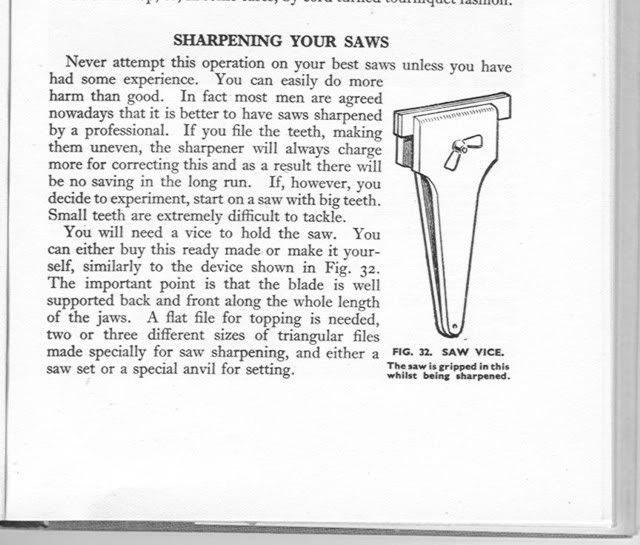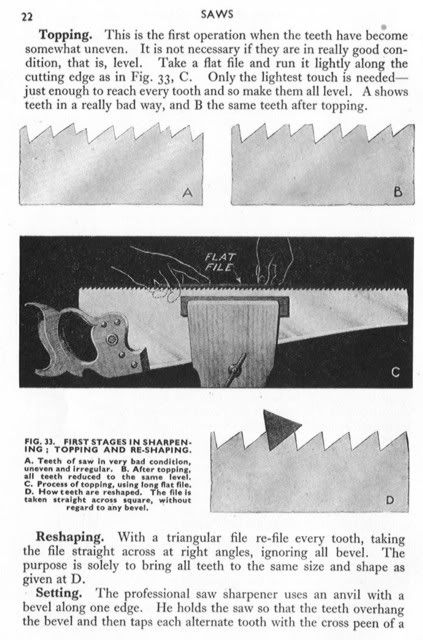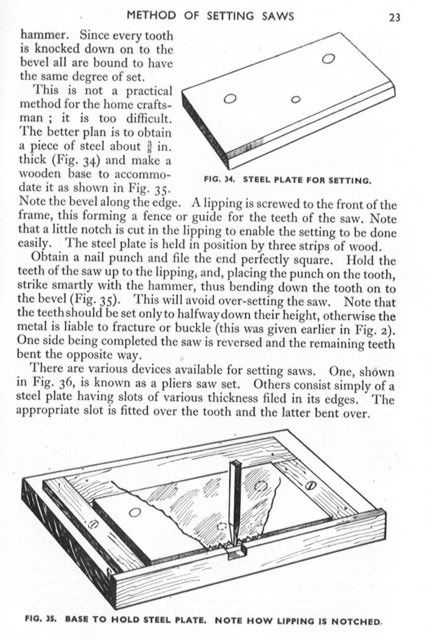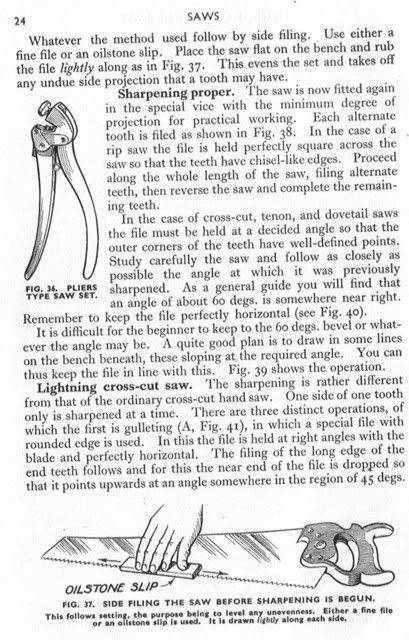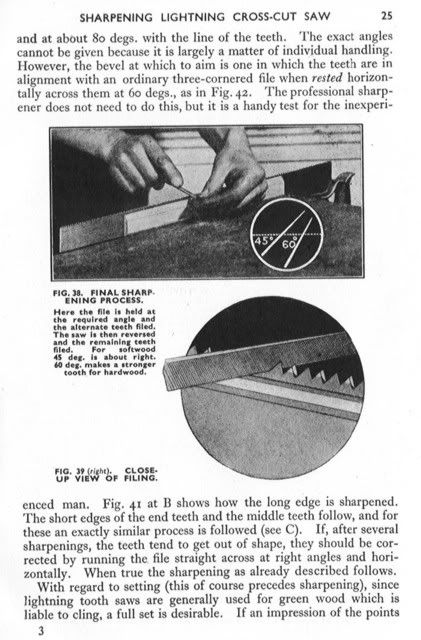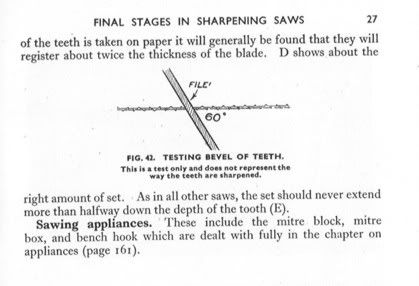You need to also remember that if the saw is real badly manged up you will need to reshape the teth in between the jointing and setting stages. In extreme cases even remove all the remaining "teeth" and reshape a whole new set, even altering the PPI at this stage
Major problems with old saws is
1/ Failing to joint the teeth to level tips and just sharpening each tooth equally. This eventually results in a concave toothline as the middle teeth wear more than the end ones
2/ varying rake angles (caused by inconsistent filing)
3/ no set
4/ too much set
5/ Uneven set
6/ Bad pitting near the teeth, renders the saw vitrually useless
7/ Too many broken teeth
8/ Shoddy attempts at hammer flattening of a dented blade
9/ bent/cracked/warped blade
Eclipse setting pliars are fine, you get consistent results every time
Also remember to always set the teeth in the same direction (ie lefties to the left, righties to the right) If you try to reverse it youll snap your teeth off trust me I did it

If you want an agressive cut, shape teeth with a very steep rake angle (like a Japanese rip saw) BUT the saw will be harder to start. I'd recomend practising filing a rip saw first as you basically file right across at 90 degres.


